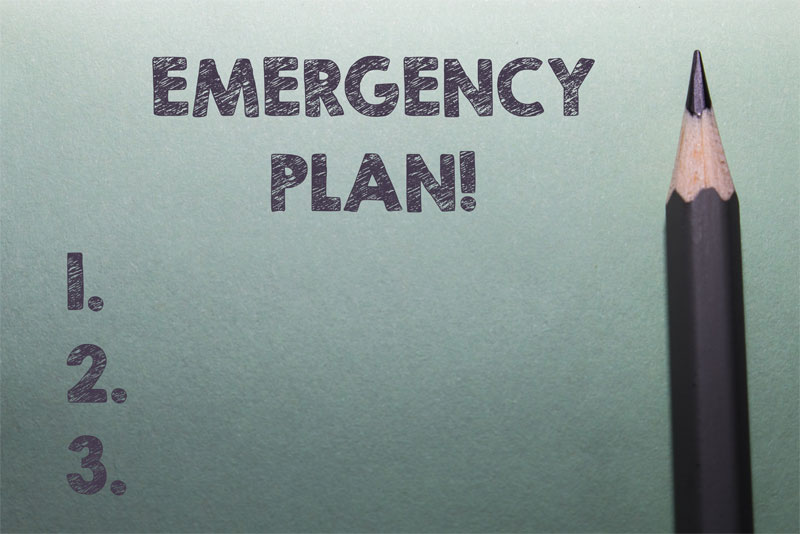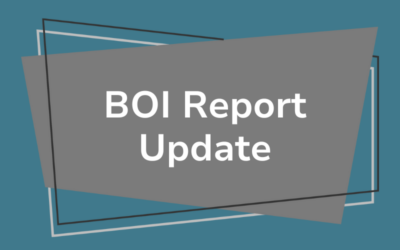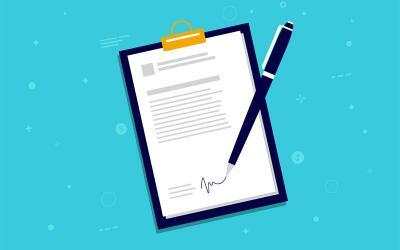It’s an understatement to say the last few years have been tumultuous. Nearly every business has felt the pandemic’s economic effects, and many have faced natural disasters such as hurricanes, tornadoes, draughts, and wildfires.
With CorpNet’s location in southern California, I relate first-hand to the challenges that entrepreneurs have faced. Our office has closed due to wildfires and COVID-19.
Fortunately, we have a small business disaster recovery plan in place that has enabled us to continue our operations without sacrificing the quality of our customer service or our ability to meet deadlines.
Not all businesses have been as blessed, though. According to FEMA (Federal Emergency Management Agency), roughly 40% to 60% of businesses never reopen after a disaster. Moreover, 90% of smaller companies fail within a year unless they can resume operations within five days following a disaster.
7 Steps to Prepare for a Disaster
Planning for emergencies can mean the difference between rebounding from a disaster and closing your doors permanently. Below, you’ll find some suggestions to guide you through creating an emergency preparedness checklist that can help you keep your business up and running during and after a disaster strikes.
1. Review the Types of Emergencies You Should Prepare For
Some emergencies, such as data breaches, fire, and pandemics, pose a risk to all businesses. Others, such as earthquakes and hurricanes, primarily jeopardize companies in certain geographic locations or that operate in a certain way. Your first step in emergency preparedness is to identify the risks that your business might face. If you aren’t sure what poses a real threat to your company, consider consulting a disaster preparedness specialist for guidance.
2. Consider What You Need to Address During and After a Disaster
Preparing for a disaster means having both a disaster recovery plan (DRP) and a business continuity plan in place. What’s the difference between the two? They overlap in their purpose to a degree. I like how Reciprocity Labs explains their nuances:
- Business continuity refers to your plan for keeping operations going during and immediately after an emergency event.
- A DRP maps out how you will respond after an emergent event has concluded and your path to returning to normal in the aftermath.
Emergency preparedness involves thinking through all of your business’s functions, how you will carry out essential activities during and after a disaster, and how you’ll engage with stakeholders.
Some key points of consideration when planning for a disaster include:
- Management of staff and contractors
- Communications with clients and vendors
- Operational and administrative processes
- IT systems and software
- Facilities
- Finances
- Legal responsibilities
3. Question How Your Business Will Manage an Emergency
After you pin down the various aspects of your business you’ll need to address, you’ll want to get more granular with your thought process. Below, I’ve listed examples of the types of questions to ask yourself and others in your business. I encourage you to think of how you’ll handle these in the short-term (during and immediately after a disaster) and long-term (on an ongoing basis in the days, weeks, and months following a major disaster).
Here are some questions to ask:
- Whom will you need to communicate with during and after an emergency or disaster? Customers, vendors, and other stakeholders? What platforms will you use to communicate and what will you say?
- How will you continue to create your products and services during an emergency or disaster?
- How will you continue to deliver or distribute your products and services to customers?
- What data backup mechanisms do you have in place? (e.g., on-site redundancy, cloud-based data storage, virtualization of the network, secondary data site.)
- Where will you and your employees go to seek shelter or work if your location or building is unsafe?
- How will you and your employees access your systems, applications, and databases remotely?
- How will you train your employees about your disaster plan and what roles will they play in your disaster recovery and business continuity plans?
- How much money do you have set aside to help keep your business running if an emergency reduces revenue temporarily?
- Do your business insurance policies cover the types of disasters your company might face?
4. Assemble Your Business Disaster Plan
After thinking about the above questions, it’s time to turn thoughts into action:
- Create a list of important phone numbers, email addresses, and addresses so that you can contact local and state emergency management agencies, insurance companies, financial institutions, key customers, vendors, and other critical organizations and people.
- Decide how you will communicate with employees, customers, and vendors–especially if electrical power or your office telephone equipment is disabled.
- Document your business property, furnishings, equipment, and other physical assets.
- Keep financial and tax records safe (consider making duplicates and storing them in a secure, separate location and maintaining electronic copies).
- Back up your data systems regularly—in multiple ways.
- Anticipate the likely physical and financial impact disasters could have on your property and business.
- Identify what resources you’ll need to support critical business activities during and after a disaster. For example, at CorpNet, we have relied on VPN access to our data systems and cloud-based platforms, like Microsoft Teams, a collaboration platform, to keep staff connected and projects on task.
- Develop versions of your emergency plan for each type of emergency or hazard you might face. SBA provides checklists and tips for hurricanes, winter weather, earthquakes, tornadoes, wildfires, floods, and cybersecurity breaches.
- Have a disaster supplies kit (including a portable generator) assembled and located in an accessible space.
- Educate your staff about the community warning systems and evacuation routes in your area.
- Train employees about how to carry out your emergency response plan for each type of disaster you need to prepare for.
- Do a trial run of your emergency plan(s) to identify any gaps or weaknesses in your preparedness.
5. Seek Small Business Disaster Relief
The economic impact of a natural or human-made disaster can devastate a business. Fortunately, financial assistance programs exist to help companies stay afloat when affected by certain types of emergencies. If a disaster has struck your business, here are a few aid resources to explore:
6. Stay on Top of Your Business Compliance Responsibilities
If there are no relief or forgiveness programs to extend tax or other filing deadlines automatically, businesses must stay current on their compliance obligations or request extensions. Failure to do so may result in fines, penalties, and even suspension (or dissolution) of the business entity—the effects of which can add further insult to injury after a disaster happens.
Business owners must understand and keep track of their business filing deadlines at the federal, state, and local levels. If unsure about requirements and deadlines, entrepreneurs should check with the appropriate agencies or consult their attorneys and accountants for guidance. The CorpNet Compliance Portal can also help monitor filings and their due dates.
7. Discover More Information from Reliable Resources
- FEMA
- National Safety Council
- Ready
- SBA’s disaster checklists and tips
- IRS disaster information videos
Hope for the Best, But Prepare for the Worst
I know that sounds cliche, but it truly is wise advice. I think it’s important for entrepreneurs to remain optimistic. However, it’s also essential to be realistic about the likelihood of disasters.
If the COVID-19 pandemic has brought any positive effects, it has heightened entrepreneurs’ awareness that they must equip their businesses to deal with the unknown. The better prepared your business is for emergencies, the more likely (and more quickly) you’ll be to recover from the devastating effects.
Sources and References
Johnson, Allie (Published 2017, June 19; updated 2020, May 11). “How to Create a Disaster Recovery Plan for Your Small Business.” The Hartford (SmallBiz AHEAD). https://sba.thehartford.com/business-management/managing-risk/disaster-plans. Accessed September 8, 2020.
Jones, Martin. “How to Create a Disaster Recovery Plan for Your Business.” CoxBLUE, Cox Business. https://www.coxblue.com/how-to-create-a-disaster-recovery-plan. Accessed September 8, 2020.
“Make Your Business Resilient” (infographic). FEMA. https://www.fema.gov/media-library-data/1441212988001-1aa7fa978c5f999ed088dcaa815cb8cd/3a_BusinessInfographic-1.pdf. Accessed September 8, 2020.
“Preparing for a Disaster (Taxpayers and Businesses).” IRS. https://www.irs.gov/businesses/small-businesses-self-employed/preparing-for-a-disaster-taxpayers-and-businesses. Accessed September 10, 2020.
“Steps for developing a small business disaster recovery plan.” Insurance Information Institute. https://www.iii.org/article/developing-small-business-disaster-recovery-plan-0. Accessed September 8, 2020
“The Difference Between Business Continuity and Disaster Recovery.” Reciprocity. https://reciprocitylabs.com/business-continuity-vs-disaster-recovery-whats-the-difference/#:~:text=The%20key%20difference%20is%20when,how%20you%20return%20to%20normal. Accessed September 8, 2020.





